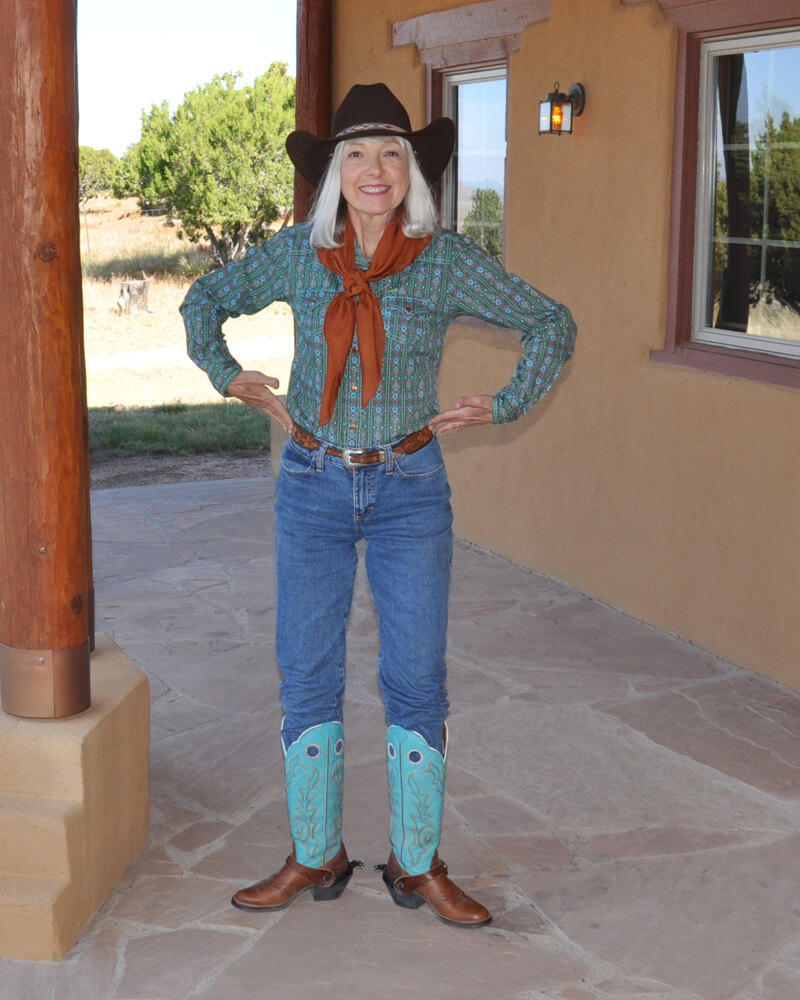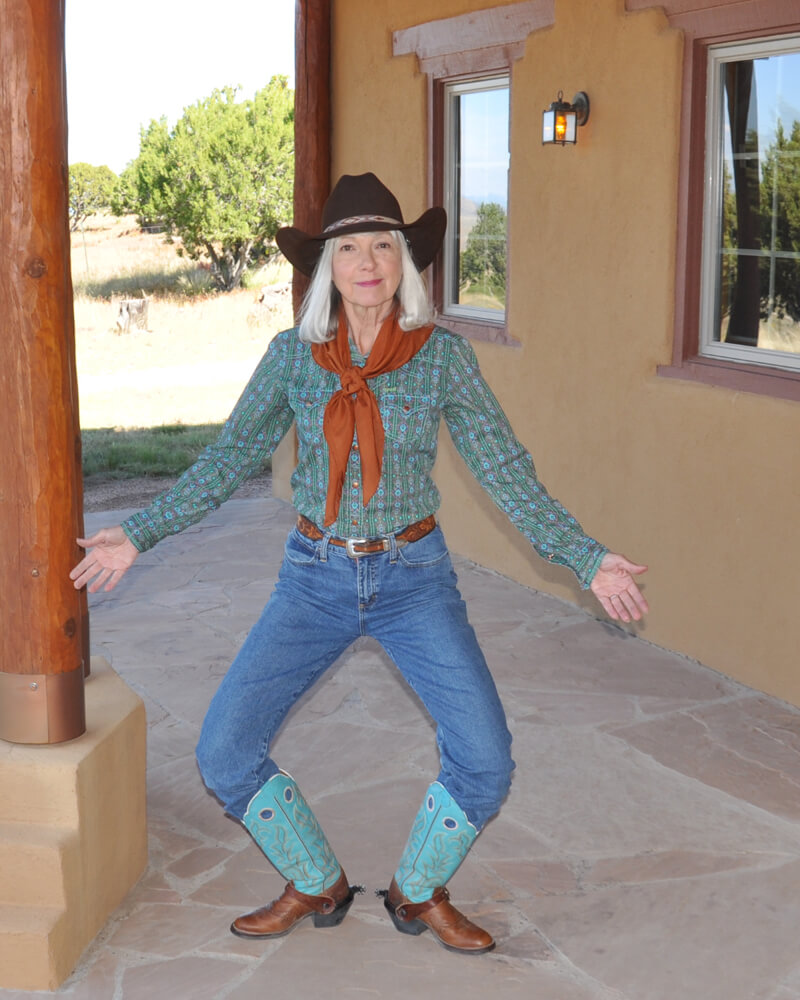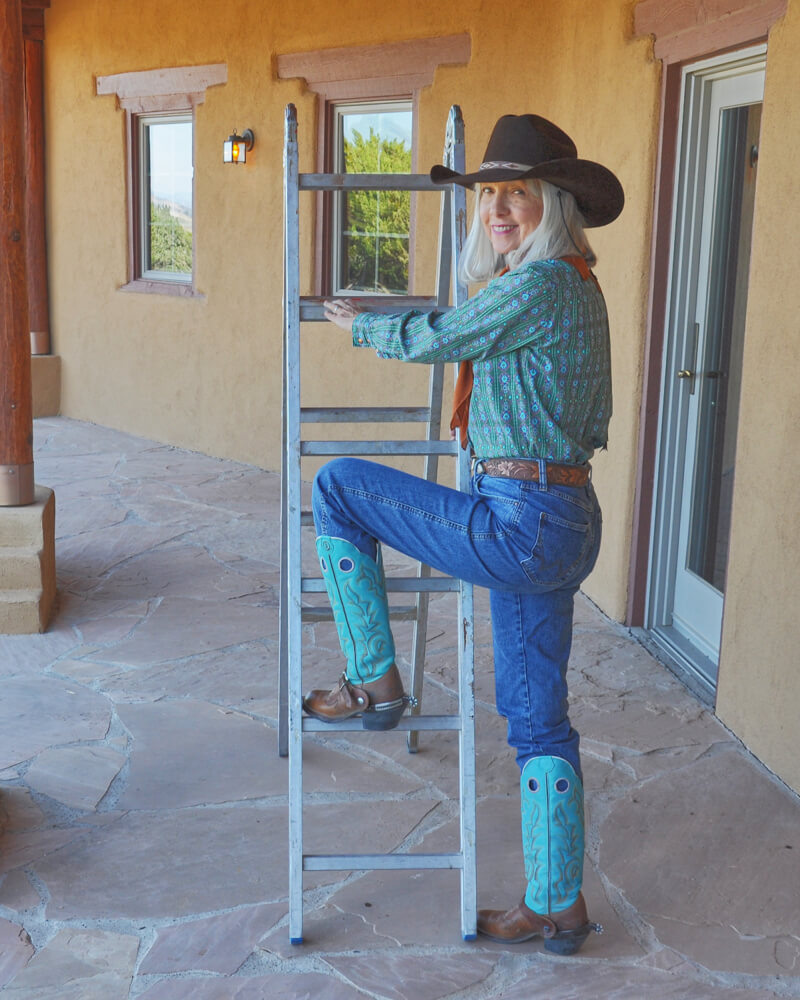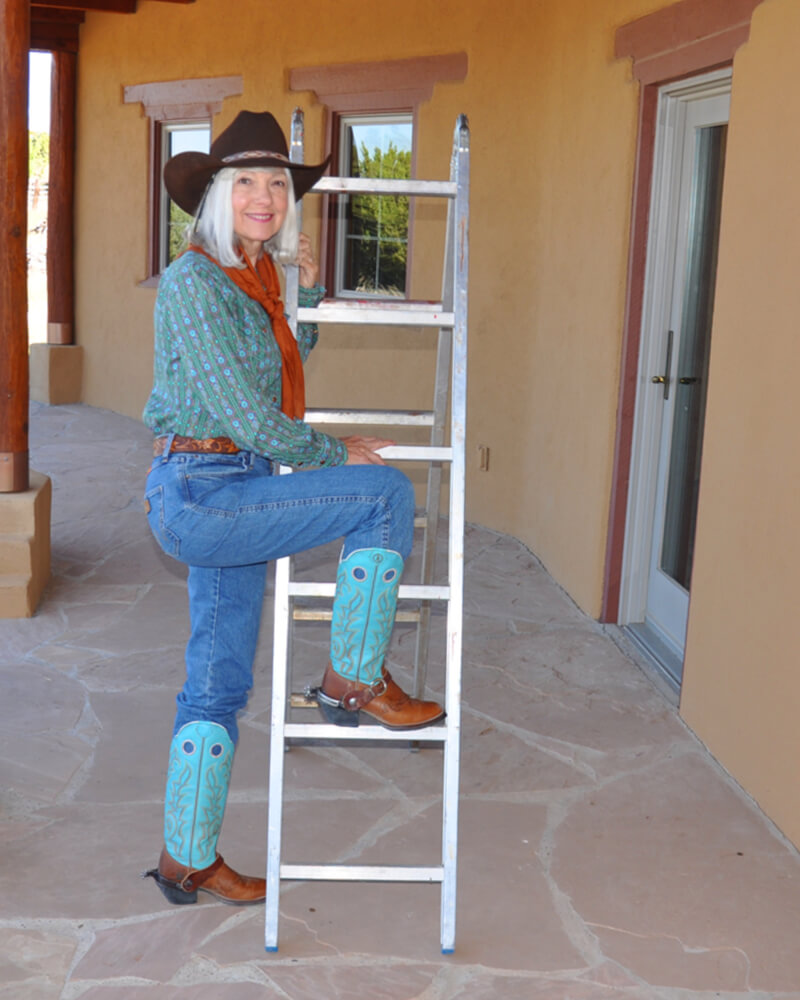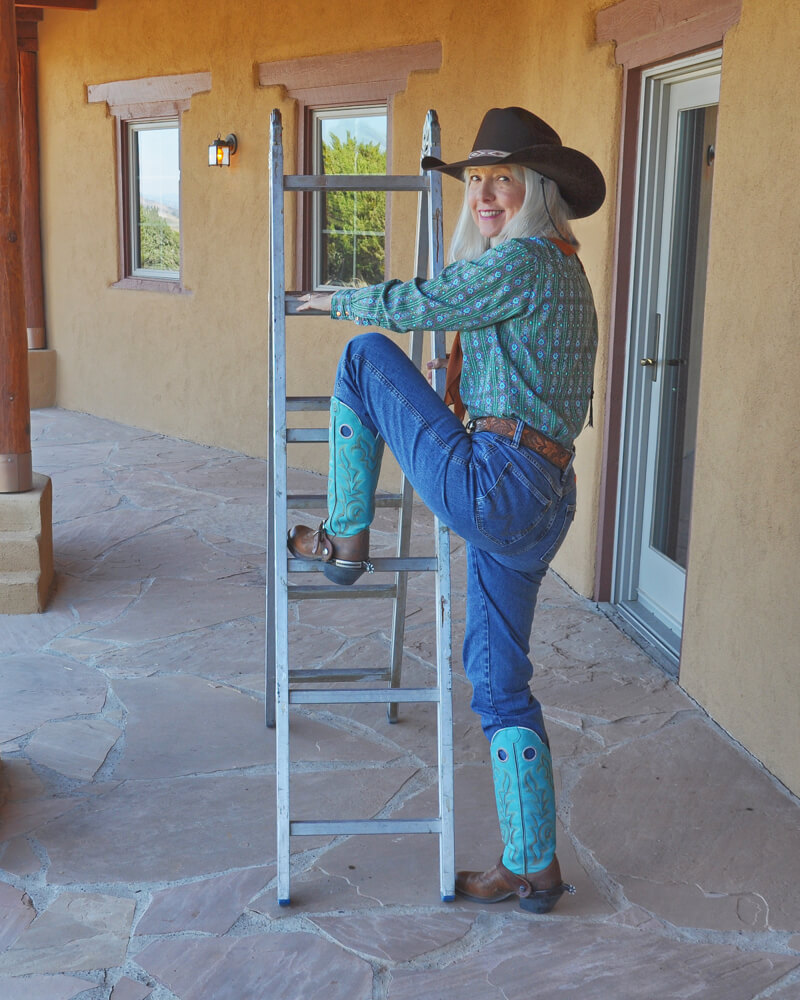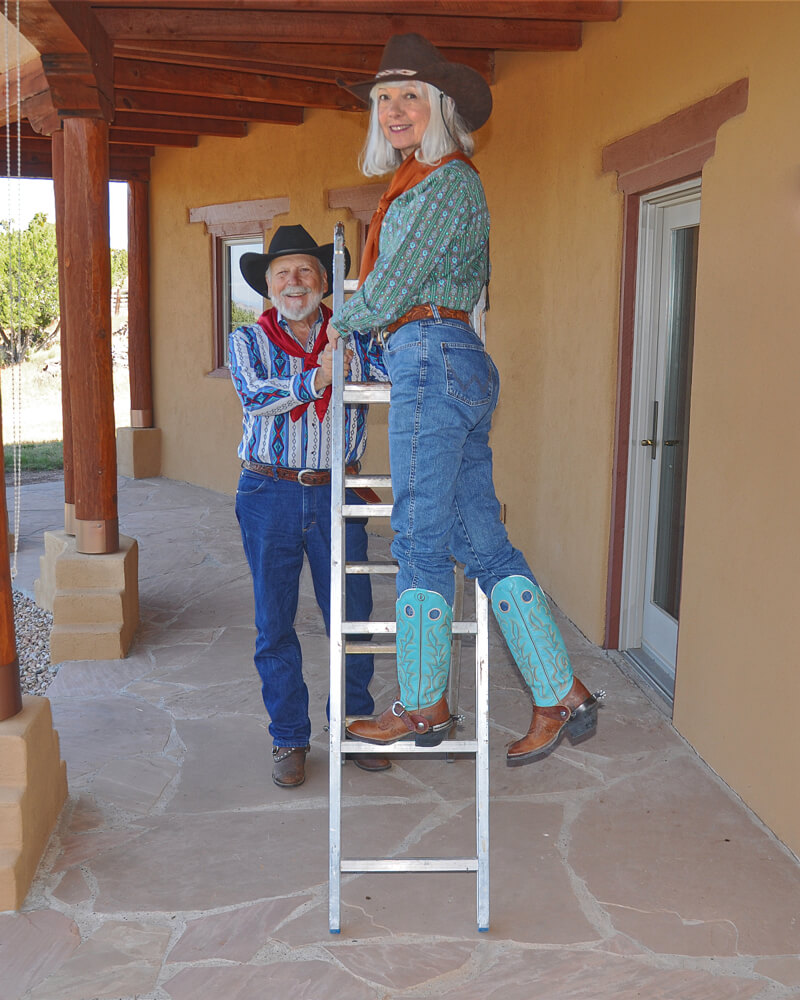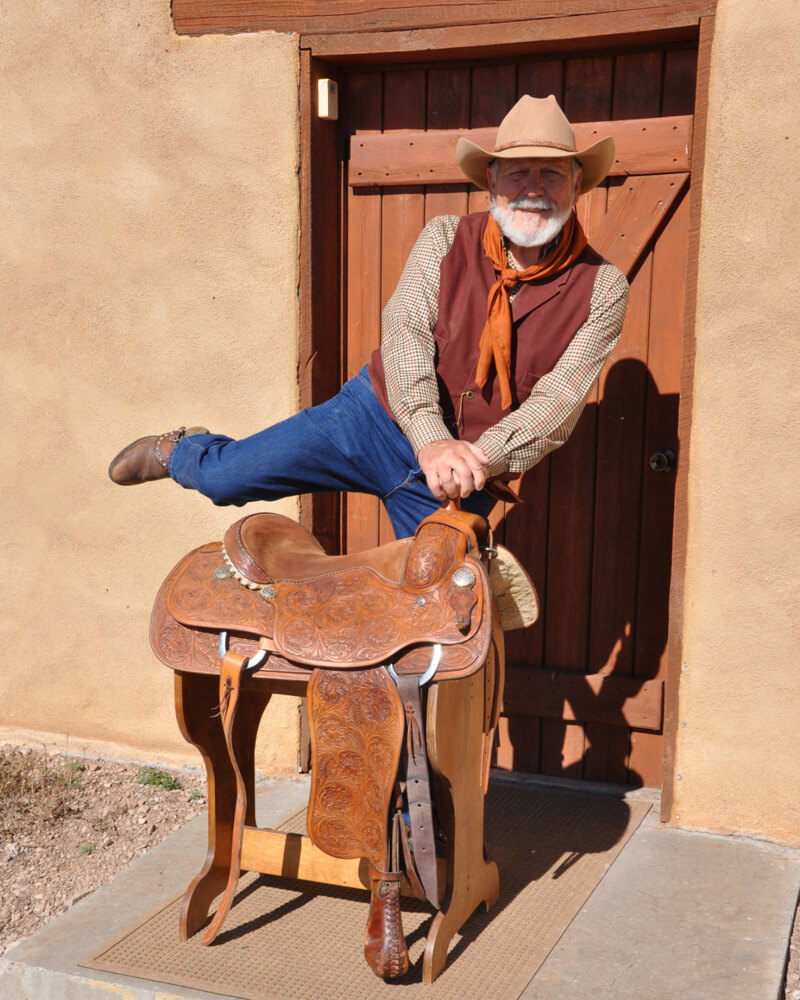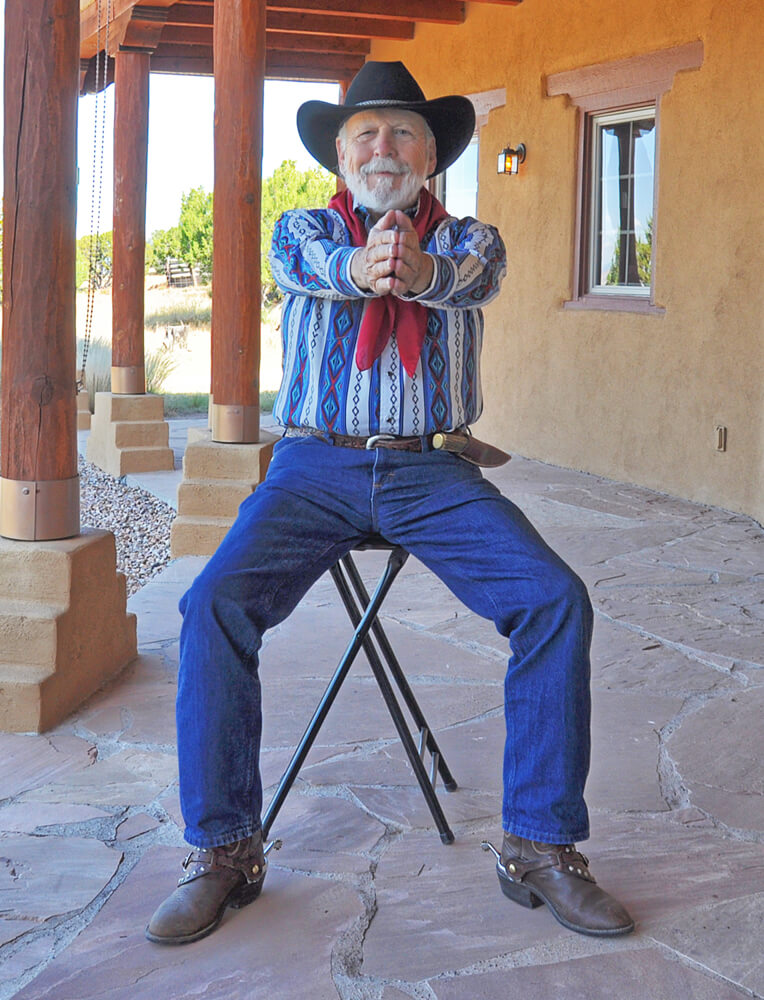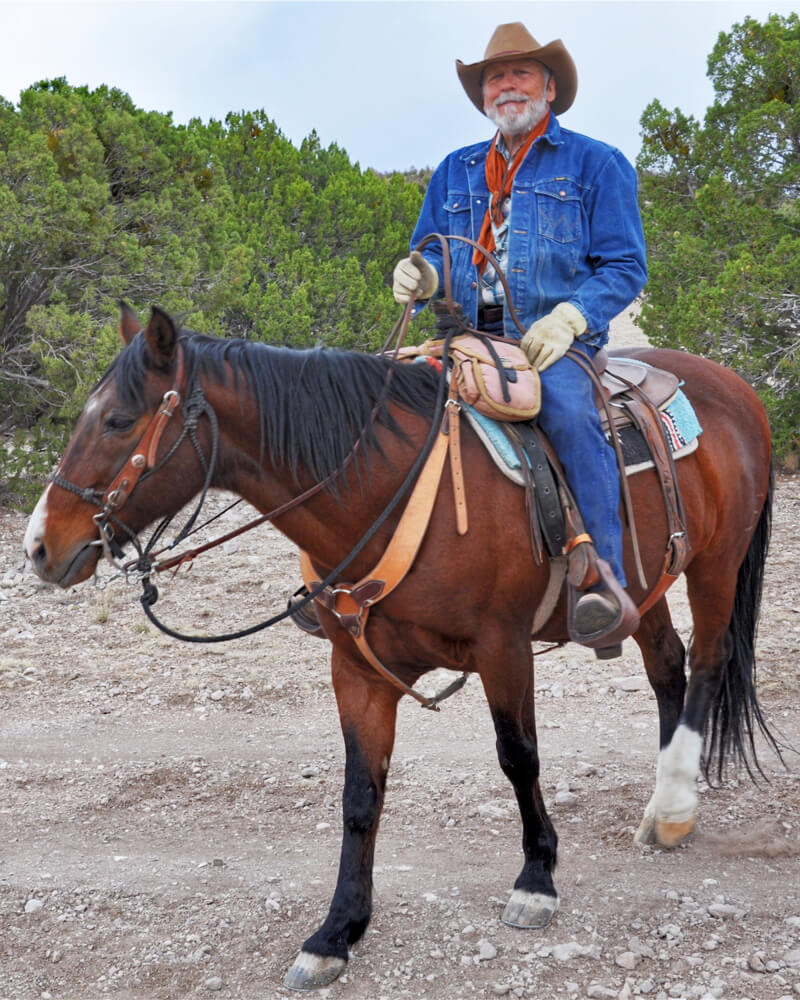Exercises for Riding
Six Exercises to Keep You in the Saddle
Rider fitness is important for safety (yours and your fellow riders), reducing soreness, as well as being associated with reduced injury outcomes. Most often, fitness is more of a problem with adults, but times are a’chang’n and some younger people, especially inactive ones, are having difficulty.
When mounting our horses at the ranch, we can (and often do) use mounting aids, such as a mounting block. But out on the range, occasionally it may be necessary to mount and dismount without these aids. We also need to get our leg over the horse without scaring or kicking it.
Quite often our guests experience some soreness as a result of horseback riding. Soreness is a limiting factor in the length of rides among infrequent riders. Riding horses uses muscles, joints, and ligaments that we normally don’t use when not on a horse. There are several exercises we recommend to riders before they come to ride. Like riding, we recommend that one start slowly with these exercises and build up over a period of time. These exercises are rather simple. They will help with extending your time in the saddle and getting on and off the horse. Our ranch is at 7,400 feet, so the altitude takes a bit of getting used to. Of course no exercises will help if one doesn’t do them.
We have found six exercises to help with our style of riding:
Arm Extensions
Hold your outstretched arms in front of you, shoulder high.
Today we are so used to holding onto steering wheels and desk work, many people find it hard to extend their hands in front of the saddle horn for any length of time. (You can’t ride looking like a T Rex); Try and work up to 3-5 minutes a day.
You can do this most anywhere. On a stool, your favorite chair. Here, I had a saddle and saddle stand.
Demi-Plié in First and Second Position
Who thought you would be studying ballet to ride a horse? Actually, Pliés really help with our style of riding. They will help get your hip sockets loosened up, strengthening your quads, and help with turning one’s toes out. We use our legs and upper body to direct the horse.
Start by moving your toes apart. Eventually, try to get your toes apart between 170 to 180 degrees. (One mustn’t get their spurs tangled)
Ed Krauss taught me about Pliés (he was a cutting horse trainer and instructor, and he told me he would shoot me if I told anyone he did them).
A mirror sometimes helps, but a ballet barre is not necessary. A post or countertop will do.
Try to work up to 25.
Leg Lifts
If you have any doubt, talk to your doctor before doing these.
Wearing the style of jeans or pants you are intending to ride in, perform these simple flexibility exercises in the lower spine and legs (like you were stepping into a stirrup).
Leg Lifts (Phase I)
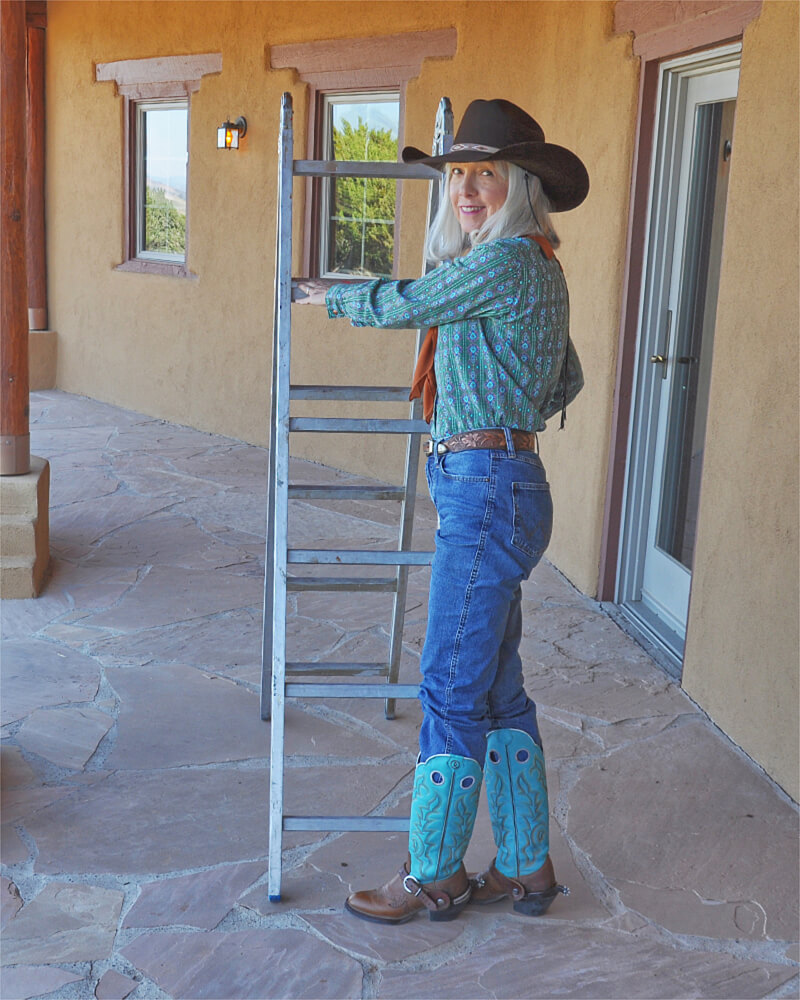
For Support, a step ladder, or extension ladder works best. Simply stand facing the ladder and hold onto the sides for balance.
Repeat this about 20 times.
Now do the same thing, standing on your left leg and lifting your right leg to the first rung. Get so you can do this at least 20 times without it bothering you.
Now do the same thing, except reach to the second step. At this time, we are not stepping onto the ladder (yet).
Practice until you can reach the second step (with each leg) about 20 times without it bothering you. This sounds so silly that people want to just skip these leg lift exercises…please don’t.
After you can reach the second step, try to reach the third (reaching as high as the third step is not absolutely necessary, but it is not uncommon). I am told this part of the exercise simply helps the tendons, ligaments, and other soft tissues of the knee joint and hip. Repeat these exercises daily until there is no discomfort. By discomfort, we mean pain. All of these exercises require effort, which we don’t consider to be discomfort.
After one can do the above without discomfort, it’s time for the second phase.
Leg Lifts (Phase II)
One may have to have someone else steady the ladder. Again, stand facing the ladder and hold onto the sides for balance.
Step back down with the right foot, then put your left foot on the ground. Repeat this about 10 times.
Now do the same thing, standing on your left leg and lifting your right leg to the second rung. Get so you can do this at least 10 times without it bothering you.
Try and use your legs to lift your body and use your arms for balance. Don’t use your arms to pull yourself up.
Leg overs. (We don’t know what else to call it!)
To mount and dismount a horse safely, one needs the flexibility to get their right leg over the horse and saddle. Without hitting the horse!
You want to keep your right knee, foot, and shin bone parallel to the floor (as if you were going to straddle a bicycle). One can bend slightly at the waist. Hold for 5 seconds and put your foot back down. Repeat at least 5 times. Eventually you should be able to lift your right leg and knee higher than your crotch. If one cannot do this exercise, then one could likely wind up kicking the horse when mounting or dismounting.
Waist Flexibility
While sitting on a stool or other backless seat, or standing with your feet shoulder width apart and knees slightly bent:
Repeat on the left side. Try to hold the position for 30 seconds. Do this at least 5 times on each side.
With today’s high backed chairs and bucket seats in automobiles, we have lost a lot of waist flexibility. We do this maneuver a lot when riding a horse. If you look in the direction you want to go (eyes and belly button) the horse magically will go in the direction you are looking. We’ll talk more about that at the ranch.
Heel Drop
For many reasons (which you will learn about at the ranch) we ride with our heels below our toes when our foot is in the stirrup. Not being able to keep the heels down is a very common issue with non-western riders. Also we mount the horse by placing our toes (ball of the foot) into the stirrup. We need to be able to support our weight for a few seconds on the ball of our left foot. Therefore, stretching the Achilles tendon and calf muscle is very necessary. We use the heel drop technique to stretching these areas. You can do this exercise on a 2×4, staircase, or stepladder.
There are many other exercises to stretch the calf and Achilles tendon. Use which ever you choose.
These exercises will help keep you safe and keep you in the saddle longer. Please do them (instead of thinking one can do them). Most infrequent riders get sore in the shoulders (riding tense), hips, and knees. If you have any problems with these exercises (or understanding them) please let us know.


